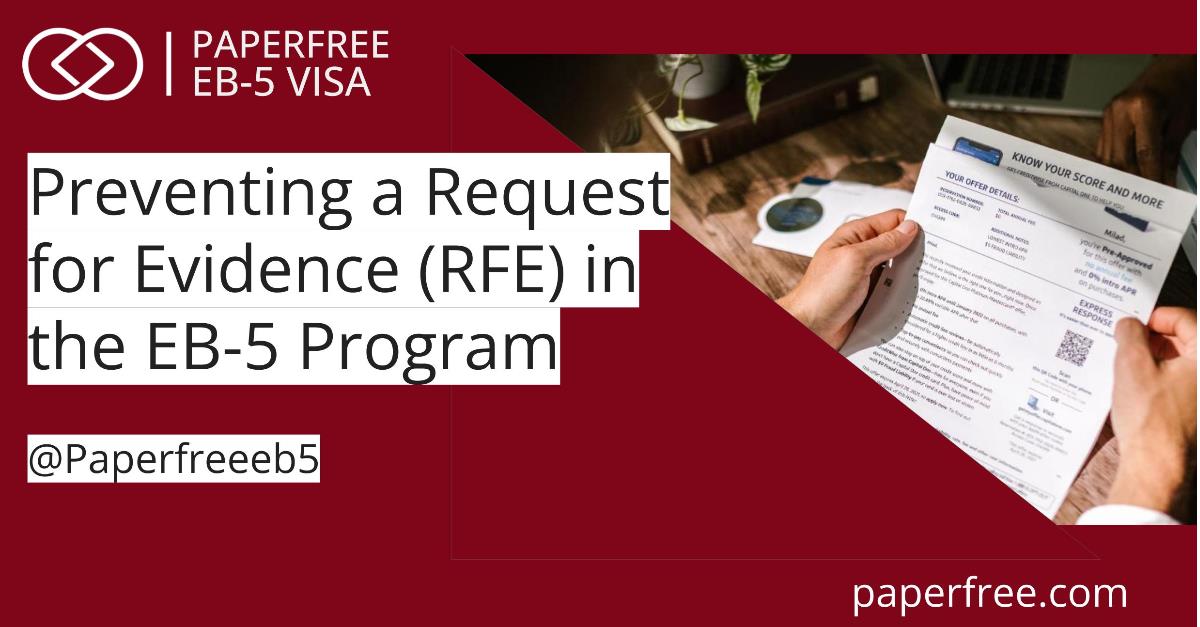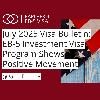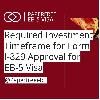Preventing a Request for Evidence (RFE) in the EB-5 Program
How to Avoid and Manage RFEs: Navigating This Common Challenge in EB-5 Visa Petitionlast updated Monday, May 26, 2025
#RFE #Request for Evidence
| | by Sidra Jabeen | Content Manager, Paperfree Magazine |

QUICK LINKS
AD
Get Access to EB 5 Investment Visa Resources
Understanding the EB-5 Immigrant Investor Program and the Request for Evidence (RFE) process from U.S. Citizenship and Immigration Services (USCIS) is crucial. An RFE is a common yet often daunting hurdle, but it’s not a sign of denial. Instead, it's an opportunity to strengthen your case. Here's a detailed guide on how to navigate the RFE process effectively.
Overview of the USCIS Request for Evidence Process in EB-5 Visa Petition
Receiving an RFE during an EB-5 Visa petition can be intimidating, but it’s crucial to approach it as a proactive step to enhance your application. An RFE means that USCIS needs more information to proceed with your application. This request can delay your process, but responding promptly and thoroughly can help keep your application on track.
For a deeper understanding of the Private Placement Memorandum (PPM) and its role in the EB-5 process, check out our comprehensive guide on PPM in EB-5.
What is RFE USCIS?
During U.S. immigration process, you may encounter the term RFE, or Request for Evidence. An RFE is a formal request from USCIS (U.S. Citizenship and Immigration Services) for additional documentation or information needed to support your immigration application. This request can arise for various reasons, such as needing more documents or more evidence.
Difference Between Request for Evidence and Request for Additional Evidence
It’s essential to understand the terminology involved. Many people ask about the difference between Request for Evidence and Request for Additional Evidence. In practice, these terms are often interchangeable. Both refer to USCIS's need for more information to proceed with your case.
Request for initial evidence vs request for evidence
Another common point of confusion when discussing RFEs is the distinction between Request for Initial Evidence and Request for Evidence. A Request for Initial Evidence occurs when an application lacks essential documents required for processing from the start. In contrast, a Request for Evidence may arise later in the process if USCIS identifies further information that is necessary.
What to Do If a Request for Additional Evidence Was Sent I-129
If you received a notice stating, “Request for Additional Evidence was sent I-129,” it indicates that USCIS needs more details regarding your I-129 petition. It's crucial to respond to this request promptly and thoroughly to avoid any delays in processing your application.
How to Avoid an RFE
The best strategy for handling an RFE is to avoid receiving one in the first place. Here are some common reasons for RFEs and how to avoid them:
- Missing Initial Evidence
Submit all required documents, forms, and evidence to prove your eligibility. A thorough initial submission can prevent delays and additional requests from USCIS, emphasizing the importance of avoiding RFEs in the EB-5 Visa application. - Insufficient Financial Documentation
The sponsoring spouse must demonstrate sufficient financial resources, typically earning at least 125% of the federal poverty line. If the sponsor’s income is insufficient, a co-sponsor can help meet this requirement. Providing comprehensive financial documentation can prevent RFEs related to financial support. - Proof of Legal Entry
If you are already in the U.S., provide evidence of legal entry, such as a stamped passport or I-94 travel history. Having these documents readily available can prevent issues. - Document Translations
Certified translations must accompany any non-English documents. Please ensure the translations are accurate and certified by a qualified translator to avoid RFEs related to language barriers. - Unusual Case Aspects
If there are unique elements to your case, could you provide detailed explanations and additional evidence? This can preempt questions from USCIS and prevent RFEs. It's essential to have solid support by your side in the form of an EB-5 visa expert.
Navigating the complexities of the EB-5 program can be challenging, which is why having an experienced EB-5 immigration attorney by your side is crucial for a successful application. Their expertise and guidance can provide you with the reassurance and confidence you need during this process.
What Does an RFE Look Like?
An RFE generally contains several vital parts:
- The Facts: Introduction about your application, including type and date of receipt.
- The Law: Relevant sections of the Immigration and Nationality Act (INA) and other laws.
- Evidence Submitted: List of documents already submitted.
- Evidence Lacking: Additional documents are needed for decision-making.
- Deadline: Date or number of days you have to respond.
What do you do if you receive an RFE?
- Read the RFE Carefully
Understand what additional information is being requested and why. - Review Your Original Application
Check if any requested information has already been submitted. If so, resubmit it with your response. - Prepare Your Response Package
Include the original RFE notice, requested documents, and necessary explanations. If certain documents cannot be provided, explain why and offer alternative evidence. - Submit by the Deadline
Ensure your response reaches USCIS by the specified deadline. Keep records of your submission and proof of delivery.
Book Your Free Consultation with Paperfree EB-5 Visa Experts. Get Personalized Advice and Investment Plans. Book Your Free Consultation Today!

Conclusion
An RFE is not the end of your green card journey but a chance to fortify your application. By preparing a thorough initial application and responding promptly and comprehensively to any RFEs, you can navigate the EB-5 process more smoothly. Meticulous preparation and attention to detail are crucial to avoiding and managing RFEs effectively.
Most importantly, you don't have to walk this path alone. We're here to support you. Book a free 60-minute consultation with our EB-5 Visa Experts.
Frequently Asked Questions
Is an RFE a good sign?
An RFE (Request for Evidence) is not necessarily a good or bad sign. It simply means USCIS needs more information to decide on your application. It offers an opportunity to provide additional documentation and strengthen your case.
What is the difference between a Request for Evidence and Additional Evidence?
A Request for Evidence (RFE) and a Request for Additional Evidence ask for more information. However, an RFE generally asks for missing documents initially required, while a Request for Additional Evidence often seeks clarification or additional documents on evidence already provided.
What is USCIS's Request for Evidence I-130?
For Form I-130 (Petition for Alien Relative), USCIS may issue an RFE if the submitted evidence does not sufficiently prove the claimed family relationship or if additional documentation is needed to verify eligibility.
What should I do if I get a Request for Evidence from USCIS?
USCIS issues a Request for Evidence when the submitted application lacks necessary information or documentation. Please respond to this request with the required evidence by the specified deadline to avoid denial.
What if a Request for Additional Evidence Was Sent I-129?
For Form I-129 (Petition for a Nonimmigrant Worker), USCIS may send a Request for Additional Evidence to seek more specific information or clarification on the submitted documentation to decide on the visa petition.
What Happens After RFE Approval?
After an RFE is approved, USCIS will continue processing your application. If all other requirements are met, this can lead to the next steps in your immigration process, such as scheduling an interview or issuing a final decision.
What are the common reasons for a Request for Initial Evidence (RFE) on Form I-485?
Common reasons for an RFE on Form I-485 (Application to Register Permanent Residence or Adjust Status) include missing medical examination forms, insufficient proof of legal entry, or lack of financial support documentation.
Why might USCIS issue a Request for Evidence (RFE) for Form I-485?
USCIS may issue an RFE for Form I-485 if more documentation is needed to prove eligibility for adjustment of status. I'd appreciate it if you could respond quickly and thoroughly to the RFE to avoid delays or denial.
Pages Related to #RFE
- Forms
- EB5 Investment Visa Guide 2025

- Paperfree Investment Visa EB-5 Program is Your Your Clear Path to Green Card USA

- July 2025 Visa Bulletin: EB-5 Investment Visa Program Shows Positive Movement

- EB-5 for Tech Entrepreneurs: Immigration Program for Startup Founders | Paperfree

- U.S.-Based EB-5 Investors Surge in 2025 | Concurrent Filing & Loan Repayment Explained

- Investment timeframe for Form I-829 approval for EB5 Visa

- Joseph Edlow Confirmed as New USCIS Director

Popular Page
Benefits of the EB-5 Visa Program| A Comprehensive Guide
Book a Free Complimentary Call
real estate investing Investment Visa USA Investment Magazine Private Real Estate Funds real estate funds
